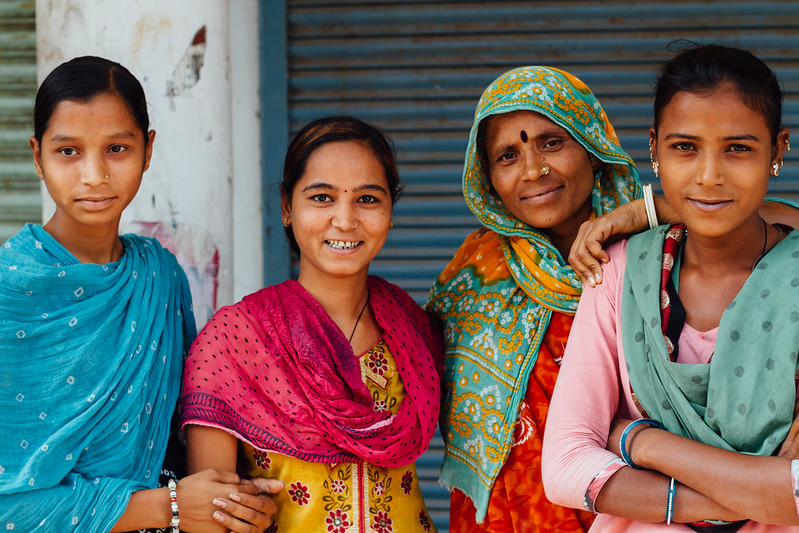Women’s Police Stations Combat Gender-Based Violence in India
 In India, approximately 120 women live in extreme poverty for every 100 men and 30% of women experience domestic violence. Yet, many never report these incidents due to fear, stigma and a lack of trust in law enforcement. Deeply entrenched gender hierarchies have led to widespread gender-based violence (GBV), where women often endure skepticism and prejudice when they try to tell their stories. When seeking help from male-dominated police stations, Indian women frequently face additional challenges. Men account for 90% of the Indian police force, making it difficult for women to feel safe or understood when reporting violence. Despite government efforts to increase female representation in law enforcement, progress has been slow, leaving many women without a supportive system to rely on.
In India, approximately 120 women live in extreme poverty for every 100 men and 30% of women experience domestic violence. Yet, many never report these incidents due to fear, stigma and a lack of trust in law enforcement. Deeply entrenched gender hierarchies have led to widespread gender-based violence (GBV), where women often endure skepticism and prejudice when they try to tell their stories. When seeking help from male-dominated police stations, Indian women frequently face additional challenges. Men account for 90% of the Indian police force, making it difficult for women to feel safe or understood when reporting violence. Despite government efforts to increase female representation in law enforcement, progress has been slow, leaving many women without a supportive system to rely on.
Women’s Police Stations
Women’s police stations, staffed exclusively by women, provide a safer and more supportive environment for victims of gender-based violence. These stations focus on helping victims rather than solely pursuing the arrest of perpetrators. Officers connect women with domestic violence helplines, provide counseling and help them escape abusive situations. The first women’s police station, the Vanitha Police Station, was established in Kerala, India, in 1973. The success of this model led to the rapid adoption of similar stations across India, with 745 now operating, primarily in urban centers. These stations offer women a space where they can seek help without fear or intimidation. Female officers handle cases of domestic violence and sexual abuse, but they also address other gender-specific issues, giving victims a sense of empowerment and agency.
India’s women-only police stations have inspired similar models worldwide. Brazil established its first women’s police station in São Paulo and countries across Latin America and Africa have since adopted the model to combat systemic discrimination and gender-based violence.
Increasing Reporting and Legislative Impact
Women’s police stations in India have led to a 29% increase in domestic violence reporting. When women see themselves reflected in law enforcement, they are more likely to come forward and seek help. Increased reporting provides governments with more accurate data, which can lead to stronger legislation to protect women. By addressing the root causes of gender inequality, these stations contribute to breaking the cycle of violence and poverty.
Women who are more likely to experience domestic violence are often the same individuals living in extreme poverty. Rural women face higher risks of gender-based violence compared to those in urban areas. Women’s police stations not only offer support but also provide valuable information about the challenges these women face, which can shape policy changes that uplift vulnerable communities. Although the Indian government has attempted to address gender disparities in poverty, women-only police stations add urgency to legislative efforts aimed at ending these inequalities.
Global Impact on Crime Reduction
The success of women’s police stations extends beyond India’s borders. In Brazil, female homicide rates among women aged 18 to 24 dropped by 50% and the overall rate decreased by 17% following the establishment of these stations. Female personnel deterred crimes against women by creating an environment where victims felt safer reporting violence. India’s decision to pioneer this model has had a far-reaching influence, ensuring greater safety for women across the globe.
Women’s police stations offer more than law enforcement. They create a space where women can reclaim their agency, find support and pursue justice without fear. These stations address gender-based violence while contributing to broader efforts to break cycles of poverty and inequality.
Looking Ahead
Women’s police stations in India have demonstrated remarkable success, but their continued impact depends on sustained funding and expanded outreach. Increasing the number of these stations, particularly in rural areas, could ensure that more women have access to safe and supportive environments. Scaling these ongoing efforts can potentially reduce GBV and also contribute to dismantling structural inequalities that perpetuate poverty and violence. By strengthening and expanding this initiative, India has the potential to empower millions of women to live safely and independently, free from the constraints of violence.
– Divya Beeram
Divya is based in San Antonio, Texas, USA and focuses on Technology and Politics for The Borgen Project.
Photo: Flickr
